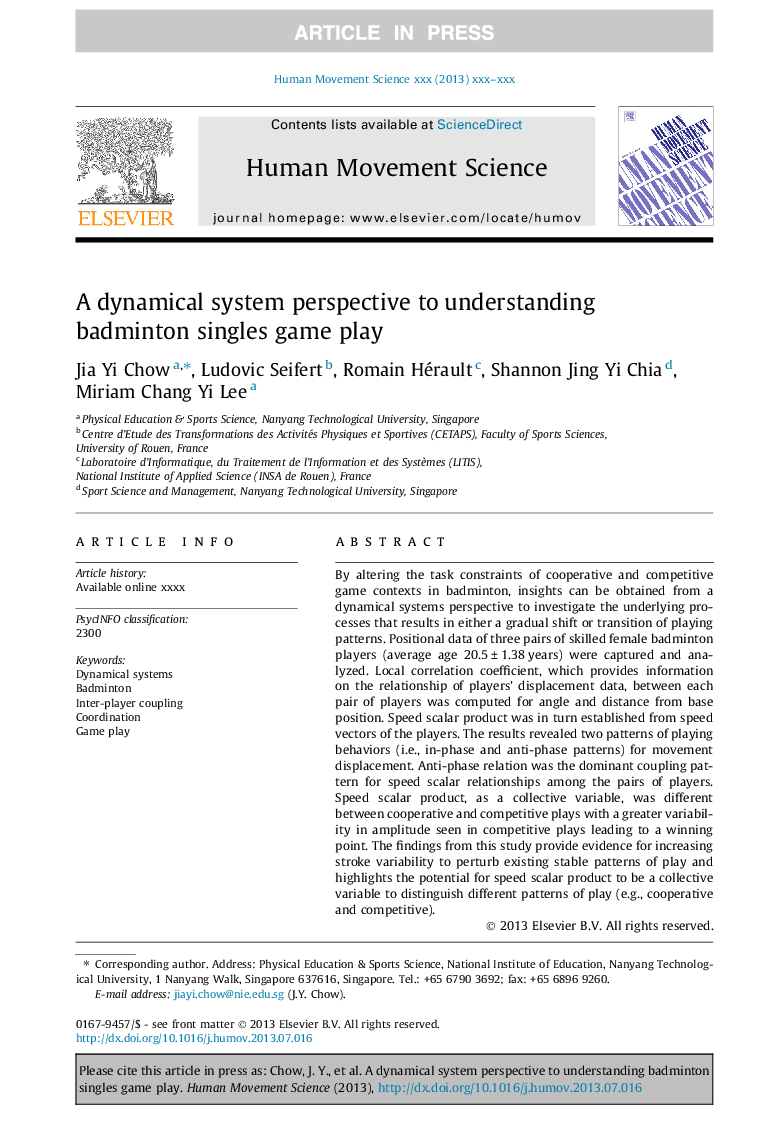| Article ID | Journal | Published Year | Pages | File Type |
|---|---|---|---|---|
| 7292479 | Human Movement Science | 2014 | 15 Pages |
Abstract
By altering the task constraints of cooperative and competitive game contexts in badminton, insights can be obtained from a dynamical systems perspective to investigate the underlying processes that results in either a gradual shift or transition of playing patterns. Positional data of three pairs of skilled female badminton players (average age 20.5 ± 1.38 years) were captured and analyzed. Local correlation coefficient, which provides information on the relationship of players' displacement data, between each pair of players was computed for angle and distance from base position. Speed scalar product was in turn established from speed vectors of the players. The results revealed two patterns of playing behaviors (i.e., in-phase and anti-phase patterns) for movement displacement. Anti-phase relation was the dominant coupling pattern for speed scalar relationships among the pairs of players. Speed scalar product, as a collective variable, was different between cooperative and competitive plays with a greater variability in amplitude seen in competitive plays leading to a winning point. The findings from this study provide evidence for increasing stroke variability to perturb existing stable patterns of play and highlights the potential for speed scalar product to be a collective variable to distinguish different patterns of play (e.g., cooperative and competitive).
Related Topics
Life Sciences
Neuroscience
Cognitive Neuroscience
Authors
Jia Yi Chow, Ludovic Seifert, Romain Hérault, Shannon Jing Yi Chia, Miriam Chang Yi Lee,
